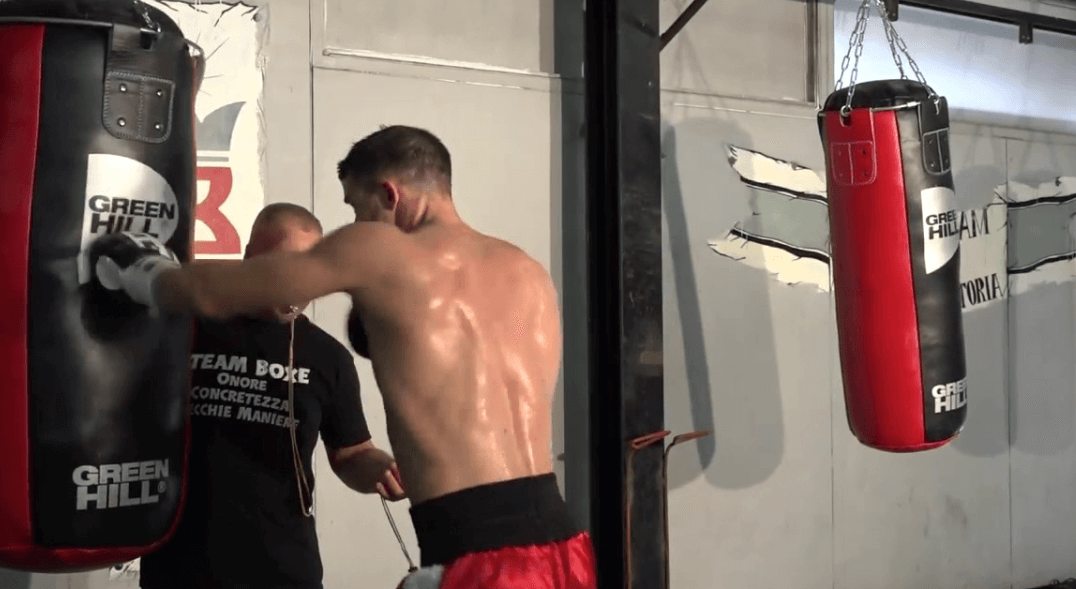You don’t need to love your body, you need to own it
Once upon when I was 21, I sublaxed (partial dislocation) both knees right after the other. That day, the right one was already bandaged, and I was hobbling around on the left, watching a soccer game with friends. There were a lot of people around me, and I was standing still and very unsteadily, unable to move with any sort of ease. I was all wobbly, constantly in danger of falling. My friends were joking around together and all of sudden one of them moved quickly, near me, causing me to panic, lose balance, promptly fall over and sublax the other knee.
I was 21 and living in Japan at the time. They took me to a general practitioner who didn’t speak any English. He didn’t do or say much while examining me, but his attitude was one of overwhelming calm. He kept saying “relax relax” through a translator as he examined my knee. When he touched my knees I would stiffen up incredibly, and shake from fear. I would have incredibly stressful reactions to his touch. He said that the subluxation wasn’t serious for my joints, but that I was just so stressed that I was actually making the pain worse through my inability to relax. He started massaging my knee and I was overwhelmed with panic, not knowing what he planned to do and fearful that my kneecap would actually come off in his hands! This was an irrational fear of course, born of uncertainty, ignorance and not knowing why this kept happening to me. I feared him touching my knee. I feared anyone touching my legs at all. He proceeded anyway, continuing to firmly massage my knee with gentle yet consistent pressure, in a slow and unhurried manner. Gradually a feeling of overwhelming relief came, my legs relaxed, and the swelling subsided. He said it was ok to walk, but that I would have to take it slow. For two weeks I walked with two massive bandaged knees, taking one step at a time. I have thought of that doctor many times since then and what I experienced with him. I wondered at my fear, and my absolute inability to relax on my own. It took many years and a lot of learning what I needed to do for my knees to stop sublaxing frequently, and for me to build physical strength. Along the way I had to unlearn many movement habits built in from fear, chronic injury and emotional distress. I had to learn how to unlearn so I could relearn how to learn. I had very fearful reactions built in through time and experience that had to be dismantled. Even as I started strength training and doing things I was told I could never do, the reactions built from fear and injury were the hardest to get rid of. At times the frustration against my own body was overwhelming and debilitating.
I had to unlearn being fearful of someone moving suddenly near me, fearful of walking down stairs or downhill, and unlearn freezing in helplessness unable to command my legs move, even after they were capable of doing so. I would feel automatically helpless unless I was in complete control of “where I am because of what might happen because I can’t walk well”. I had to unlearn being worried about multiple possible dangers associated with weak and shaky legs, (such as the danger of being mugged in Mexico, and not being able to run away). I put conscious effort into walking, moving and trying to run, etc. My legs had become “things” I had to make work. Parts of me that “would not behave properly”. I had to unlearn that attitude as well. Over time, I had to unlearn thinking of my body parts and what they did as separate from who I was and what I did.
A couple years ago I read Oliver Sacks (badass neurologist, now deceased) “A Leg To Stand On”. It is a book about a severe injury suffered and his time spent healing and recovering. Through this injury he suffered neurological damage in his leg, responsible for the experience of feeling and thinking of his leg as “not his”. Dissociation of his own body part. An unnerving experience (pardon the pun). In the book, he describes the mental and physical battle waged and made visible through the process of physical recovery and regaining the normal function of his limb. In the book he explores questions on the physical basis of identity, and the psychological theory that our sense of identity starts with our physical identity.
Oliver Sacks’ injury was more serious and acute, while mine were less serious but chronic and persistent. Yet, the components of the his experience and the stages of recovery and realization followed a similar path as mine. The frustrations and stages of growth he described were ones I experienced, and are also similar to those I have often observed in the way that people go about attempting to accomplish, change, fix or improve on themselves. The necessity of patience with the processes of the nervous system, the requirements of fun, spontaneity and the need for persistence and support from others are all concepts made clear through his condensed and intense personal story, but are concepts integral to any physical learning experience, not just a rehab one.
Even if injury is not the cause of needing to do something different or difficult for ourselves in order to accomplish something, this idea that we are not our bodies, and what our body looks like is separate from who “we are”, is one I come across frequently in discussions of fitness and training. This attempt to separate what we look like, experience and want, from what we do and how we act.
Getting fitter or stronger involves doing new things, and then doing them consistently and then progressing in the doing of them, in some way. The multiple steps of that process are more obvious when we are hurt and must come back from injury, but less obvious when we are not dealing with injury directly or something obviously “wrong”. The process is similar, even if the goal is something like “want abs”, or “smaller thighs” or “a bigger bench” or “joints that don’t hurt” or “insert-your-own”. Any physical change we want, has a mental path that goes with it. When we find that path, and follow it, we get the results we hoped for.
We must be mindful of maintaining the idea of the unity of our mind with our body, and resisting the urge to think of them as separate; resist the urge to separate our “self” from our physicality. Only through physical actions can you reconnect, bring to balance, improve, fix. And only through thought can you do those actions at the moment needed. To attempt to think of your body as separate from “who you are” is not only pointless, but potentially self-blinding. Many of the ideas we are surrounded with when considering our own fitness, physicality, athletic abilities, health, or lack thereof attempt to separate who we are from what our body looks like and what it can do, or not do. It’s seductive to think that we are something other than our body. That we are “better” than our physical frame (which is not the same as thinking that someone is defined only by their physicality). It’s especially seductive to try and think so when what we see in the mirror is less-than or different than what we would like to see. It’s seductive to divide what we think of ourselves, from what we think of our body and what “it” does.
Sometimes, there is good reason to adopt this idea of separation temporarily, especially when we have strong negative emotions directed towards what we look like or we cannot accurately evaluate what we’re doing and what we need. It is sometimes helpful when relearning motor patterns, or doing something new and uncomfortable physically, to step out of ourselves and view what we’re doing from an “outsiders” point of view. This temporary separation (“I am not just my body”) can allow us to have accurate awareness and view our training and nutrition habits objectively.
But make no mistake, your body is not separate from who you are and what you do. To think so, is an illusion we can temporarily adopt if helpful, but it is an illusion nonetheless. You are what you do. Every result you get, every exercise you do and how you do it, every thing you do, is done with your body, and the results are exhibited in your physical frame. Your habits are written in your cells, showcased in your choices, heard in your words, and revealed through your state of health. The way you choose to take care of your physical self reveals who you are, no matter what popular and politically correct ideas circulating about fitness tell you. Sure, love yourself, don’t actively shame your own body or other’s bodies, don’t obsess about yourself negatively through comparisons with others, please do reject popular ideals of beauty (which change constantly anyway), approach the desire to improve yourself from a positive place, and be considerate of your unique build and genetics.
But in all that, remember; you are your body and the state of your health, and fitness is mostly a product of your actions.
(We will leave some room, hence the use of “mostly”, to respect genetics and truly uncontrollable events.)



